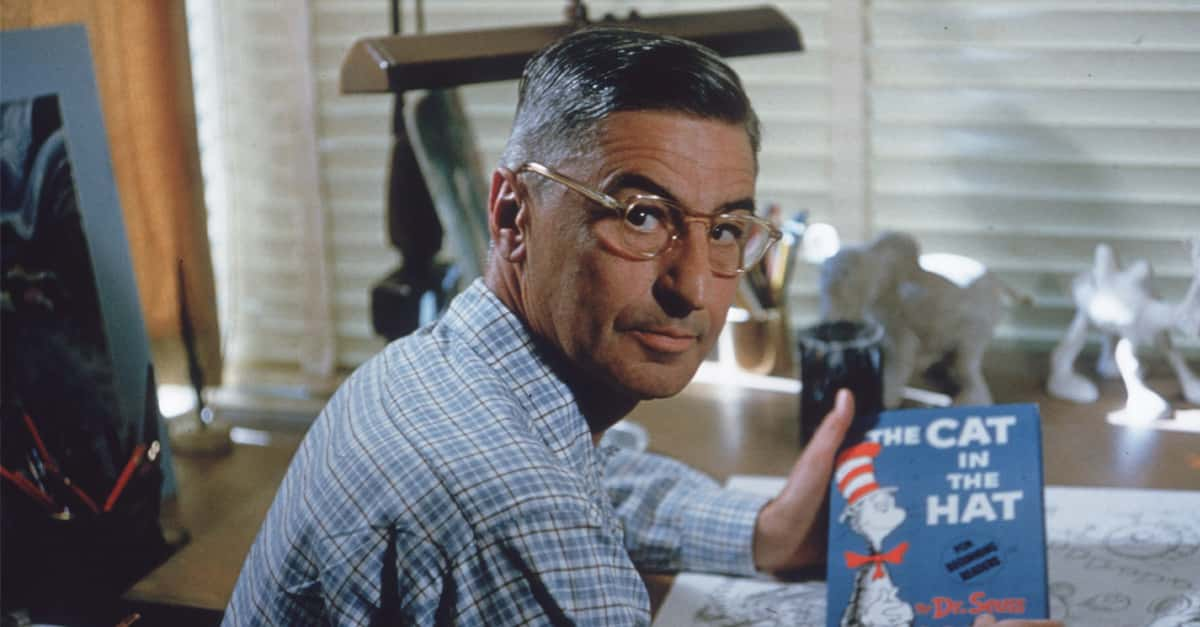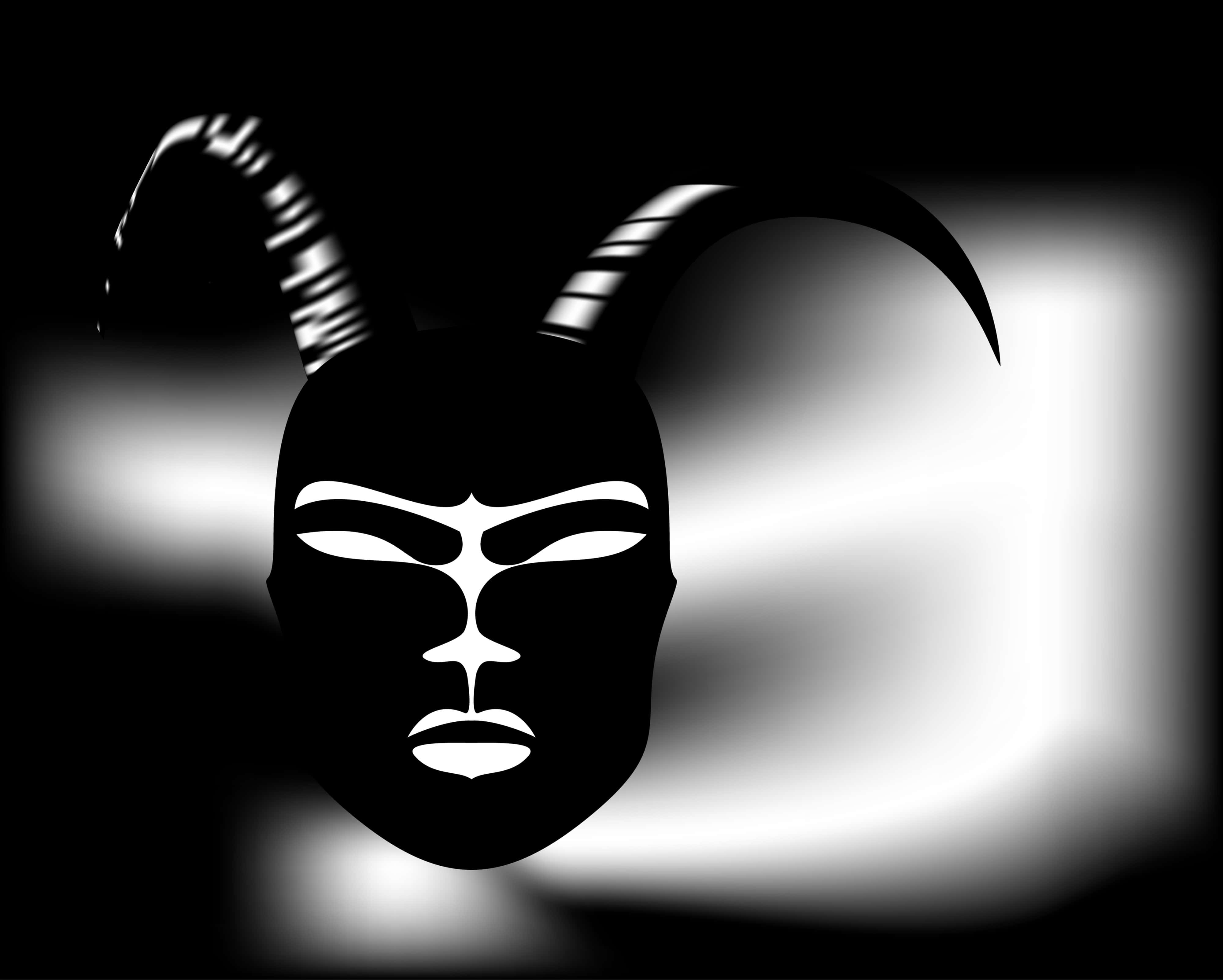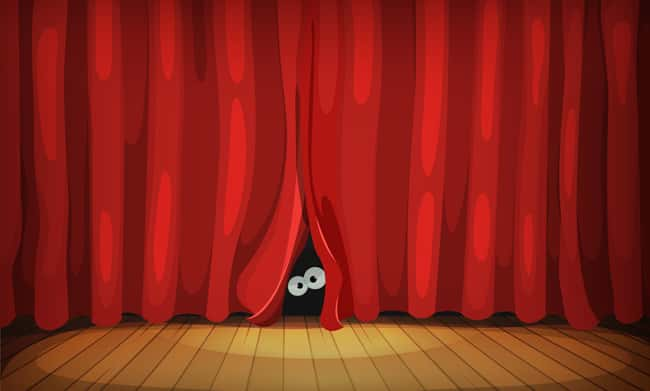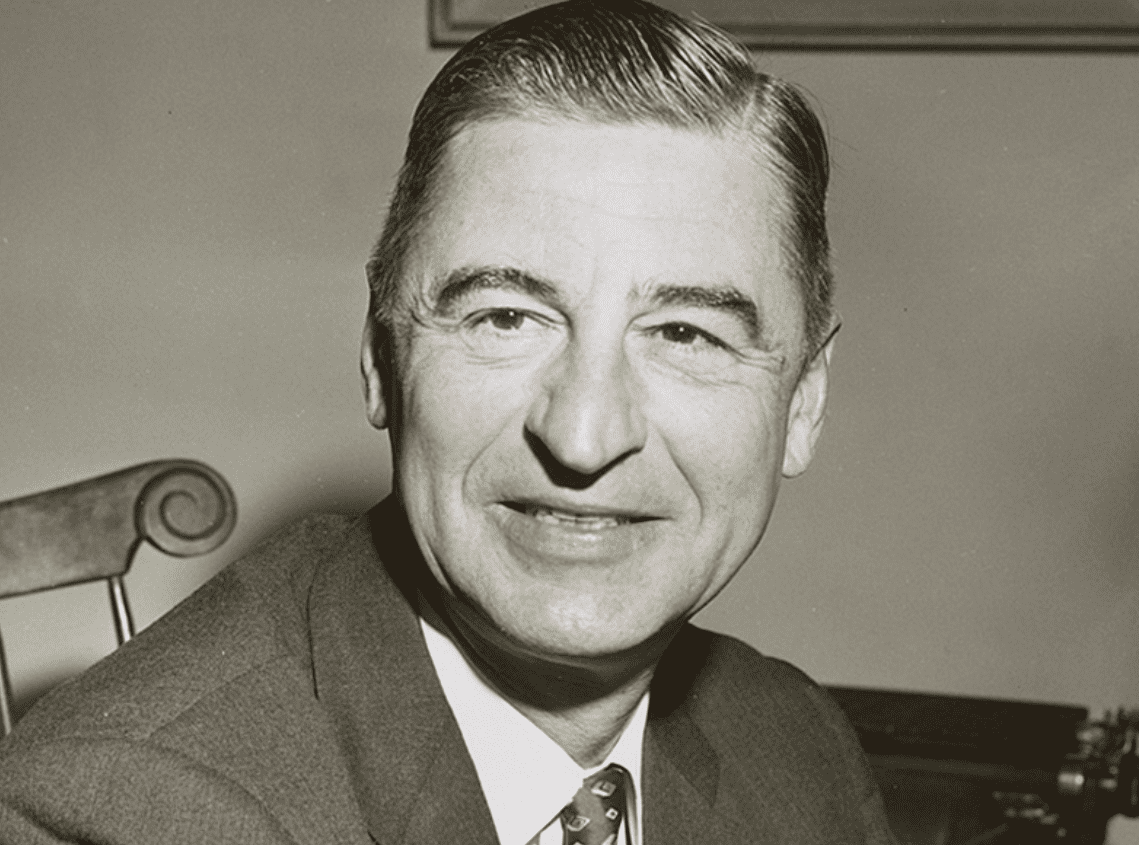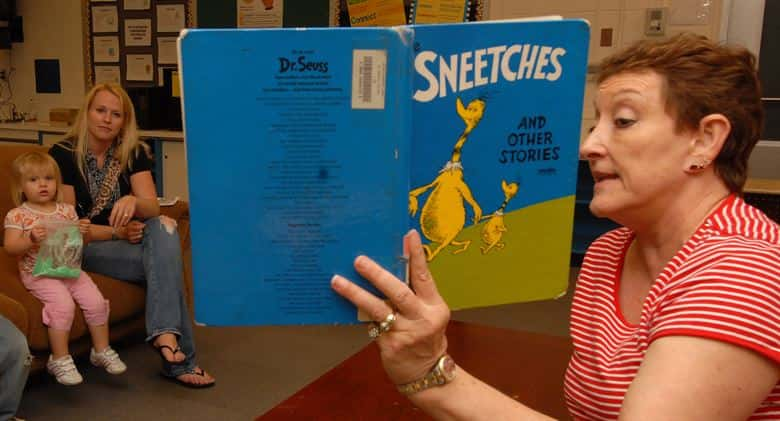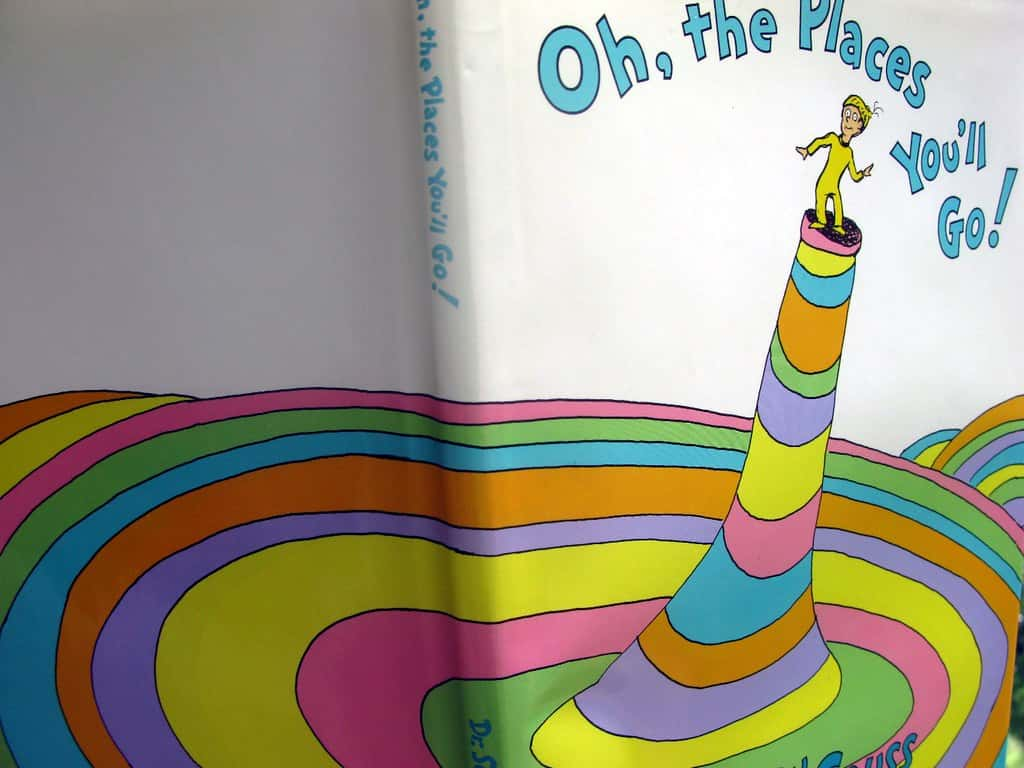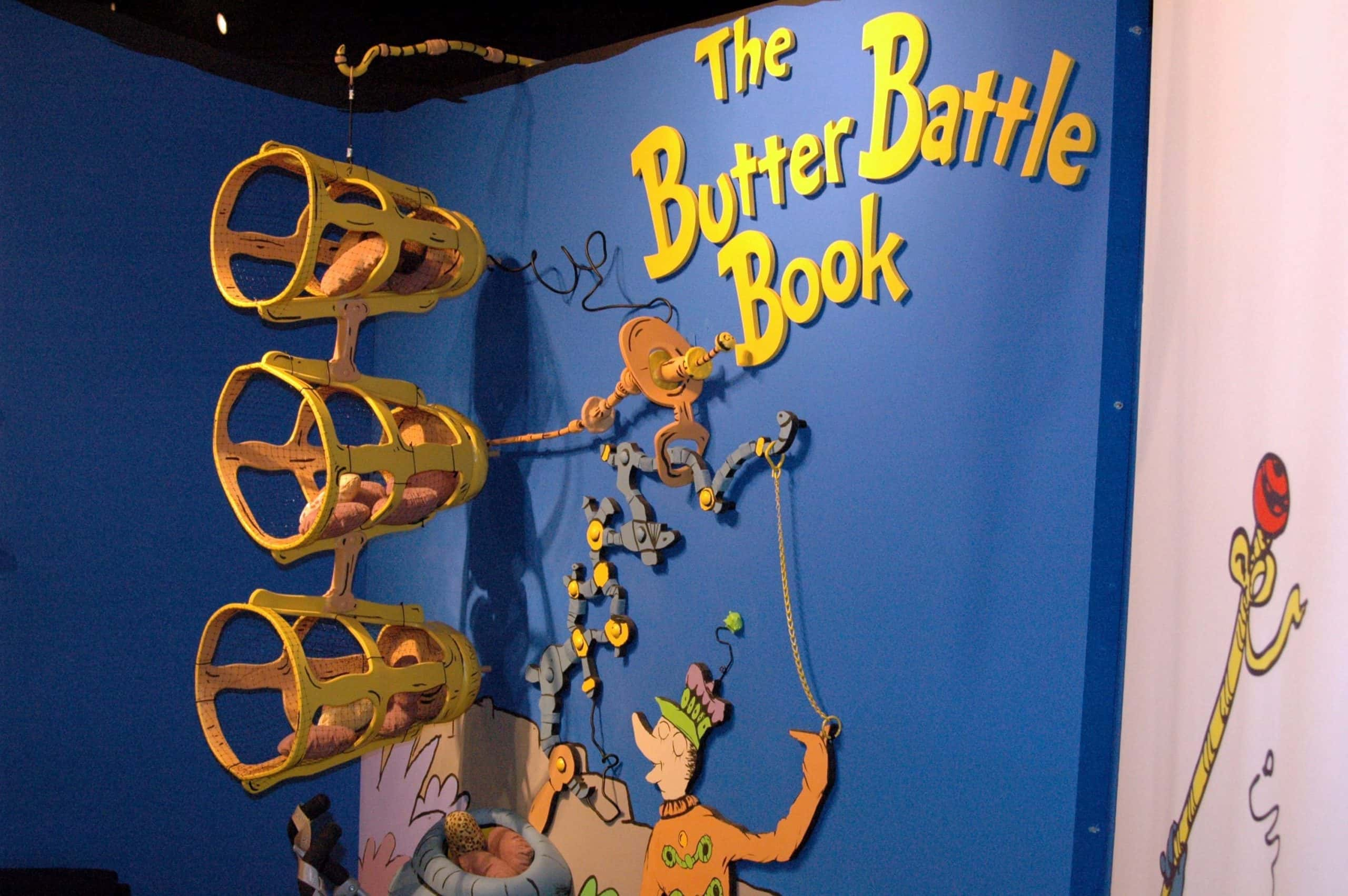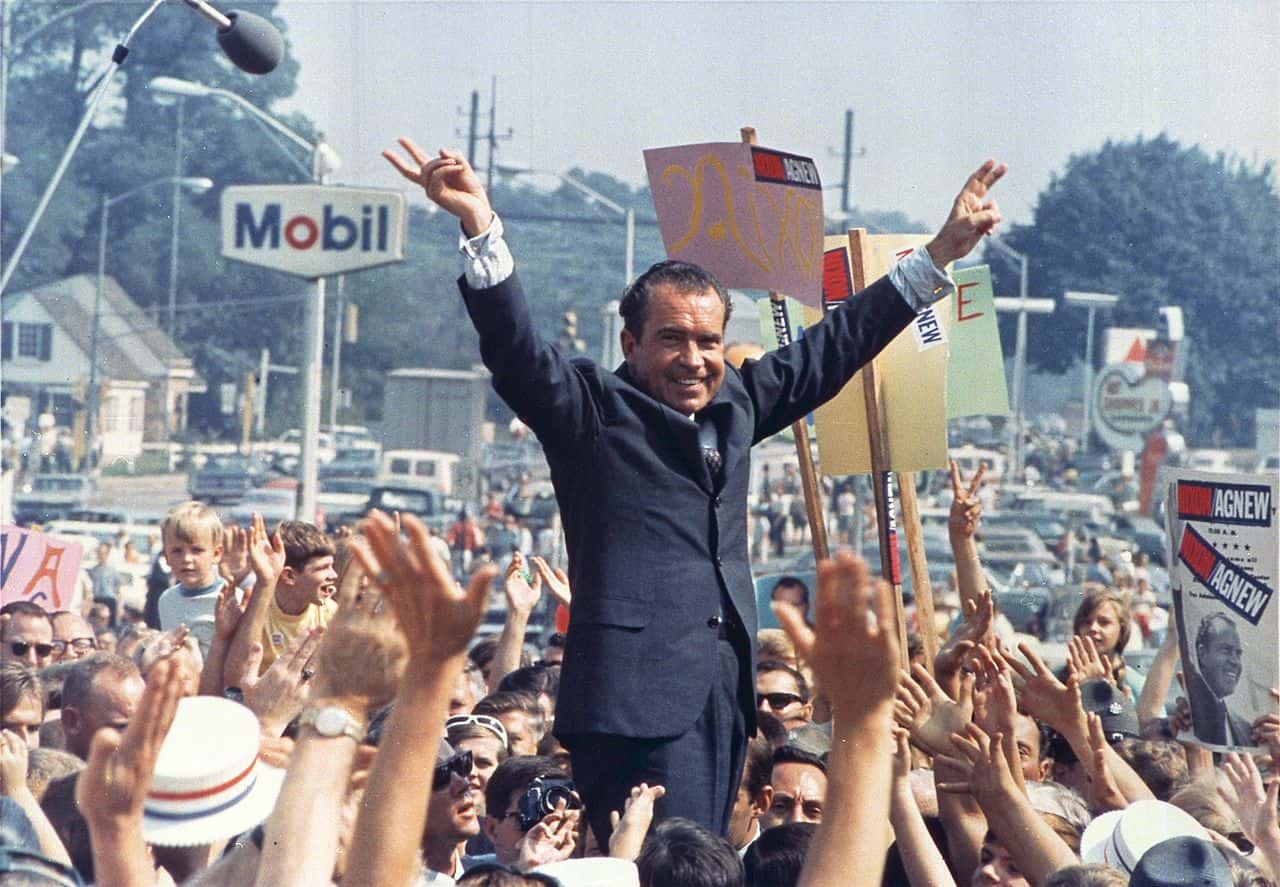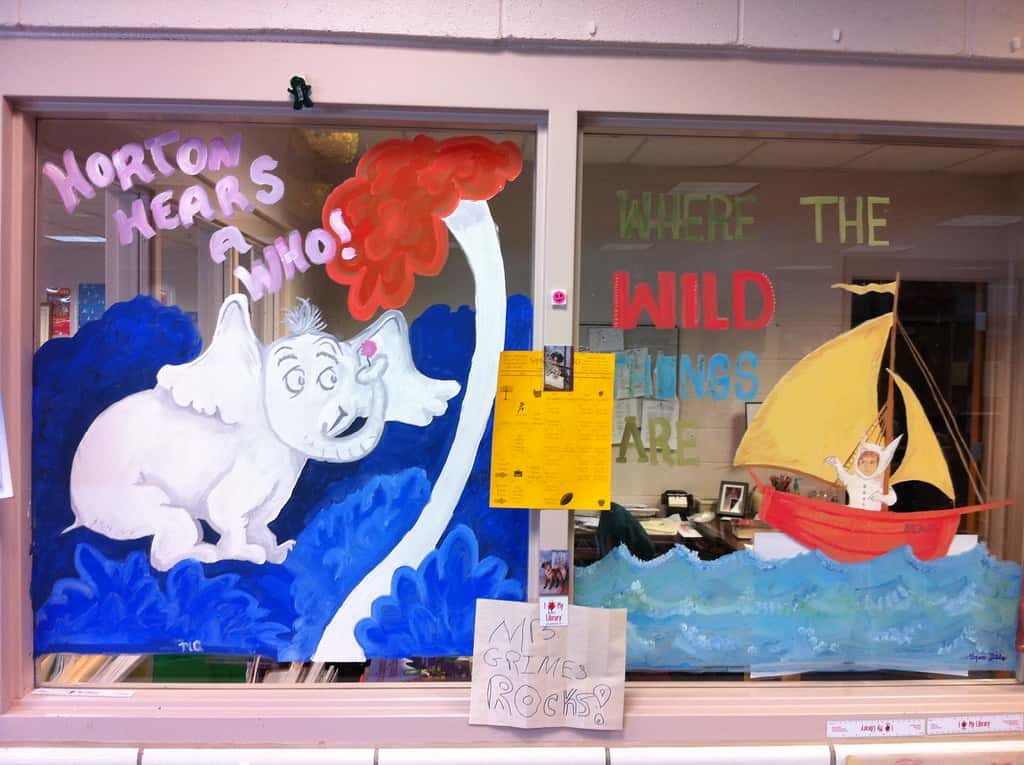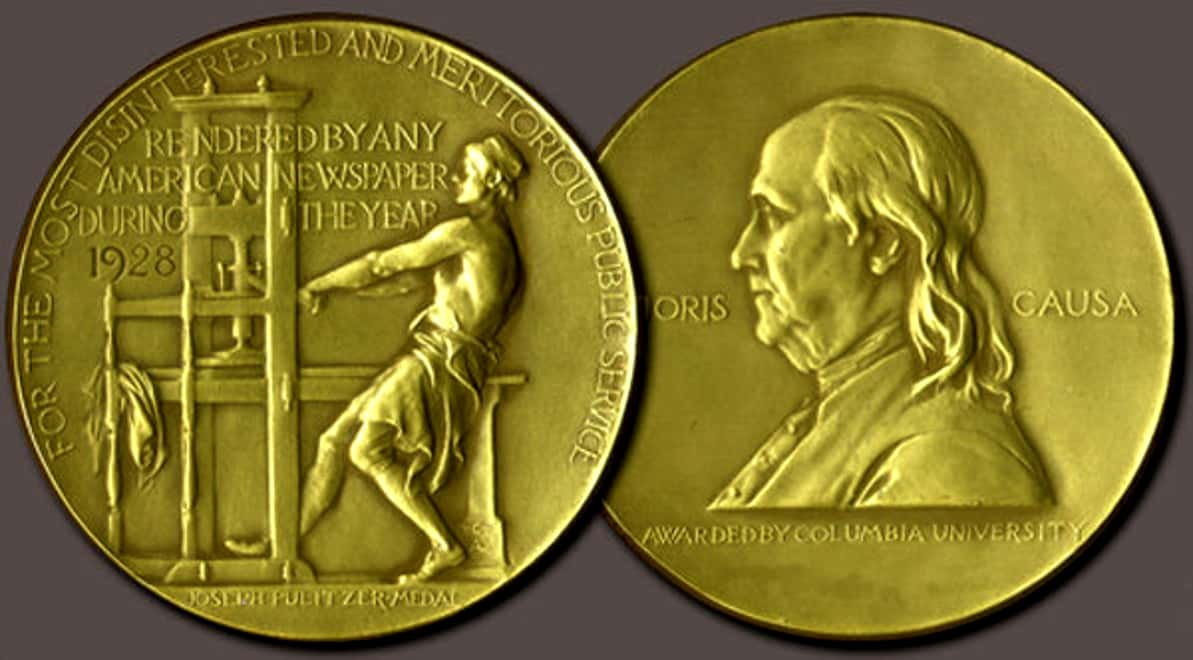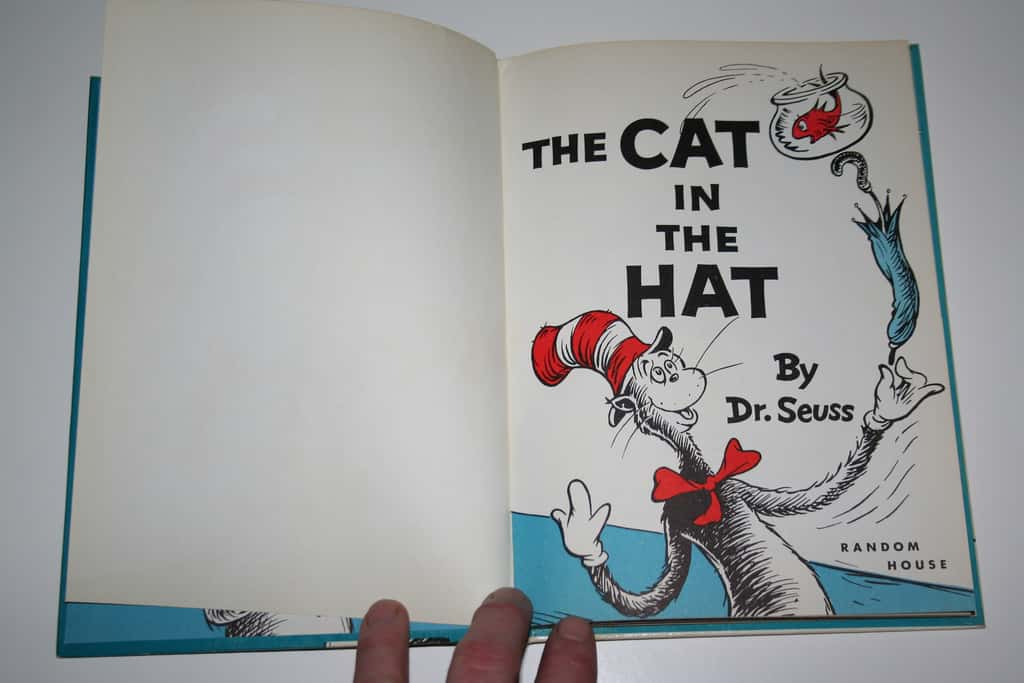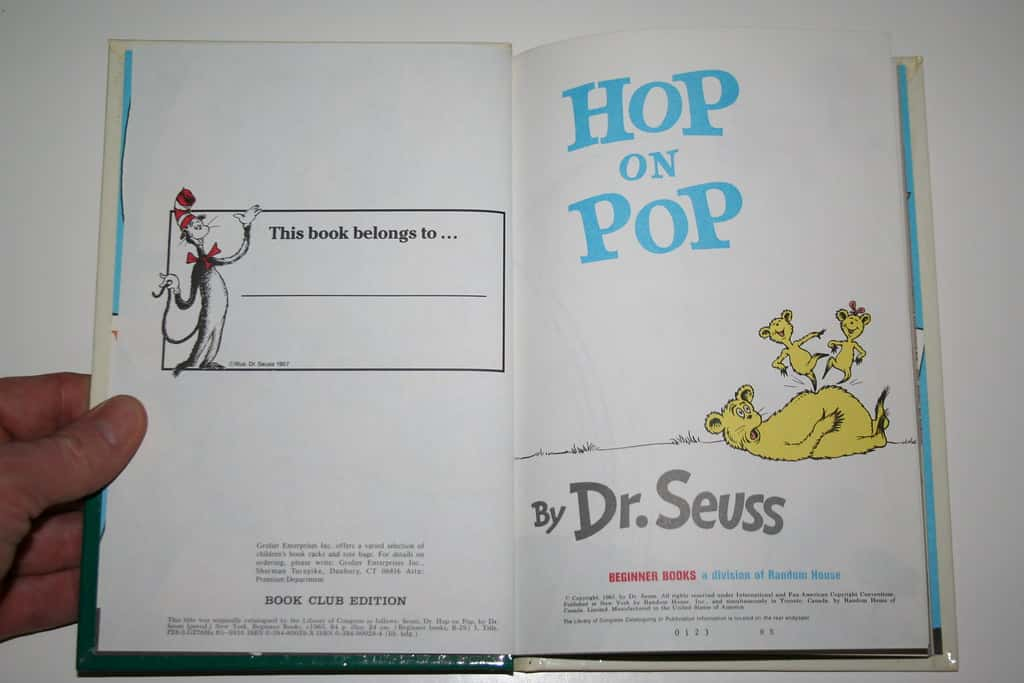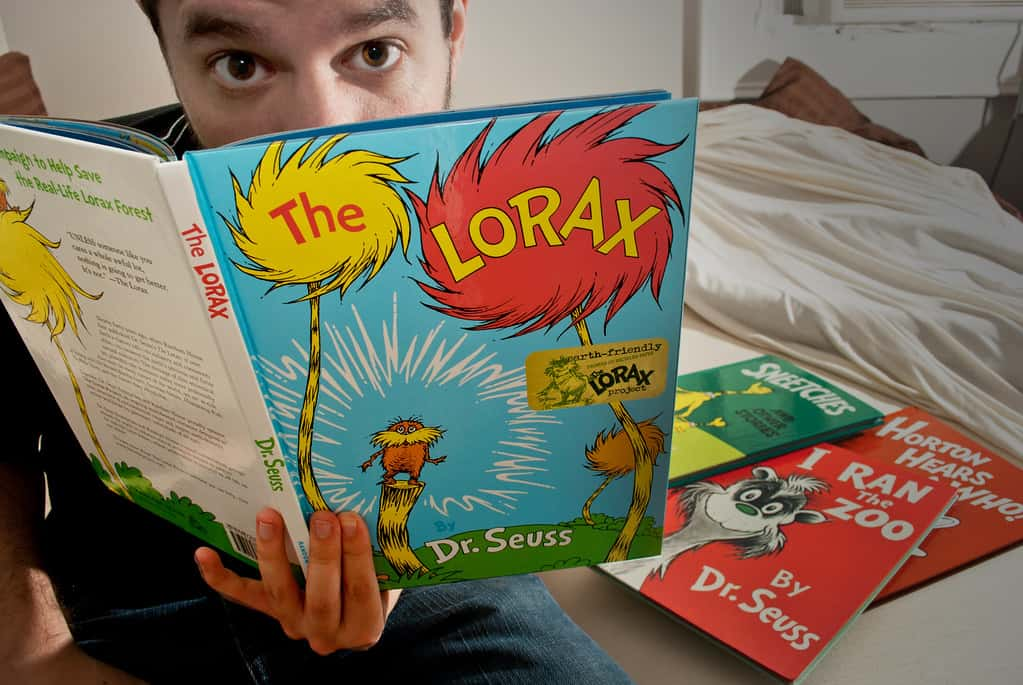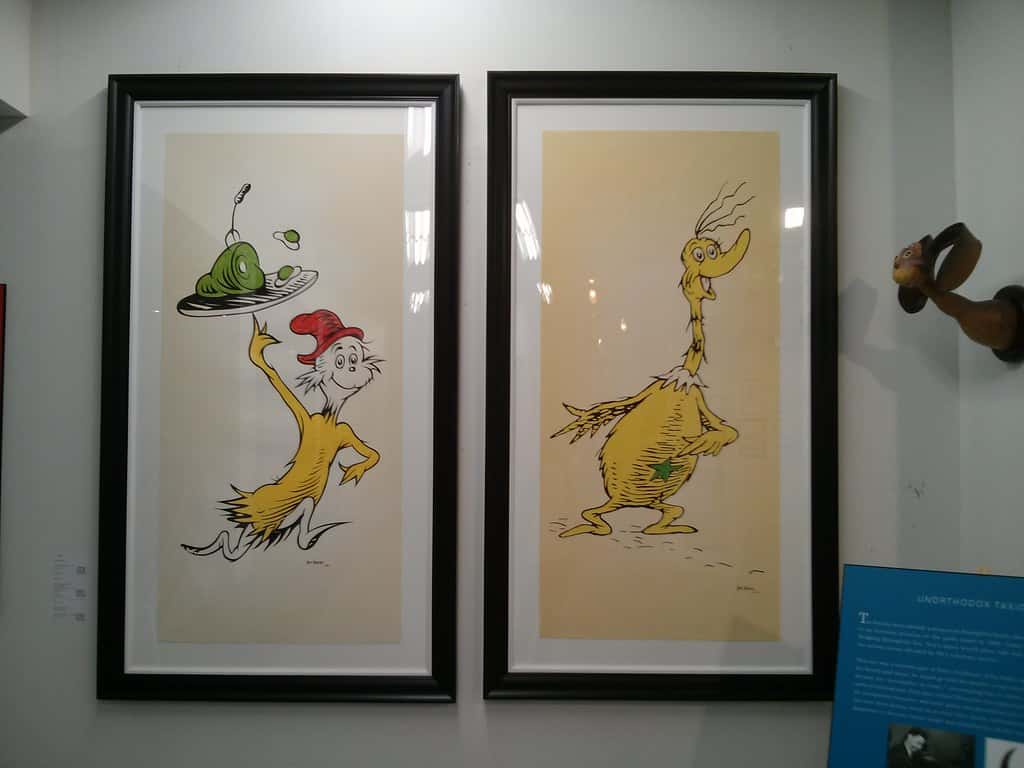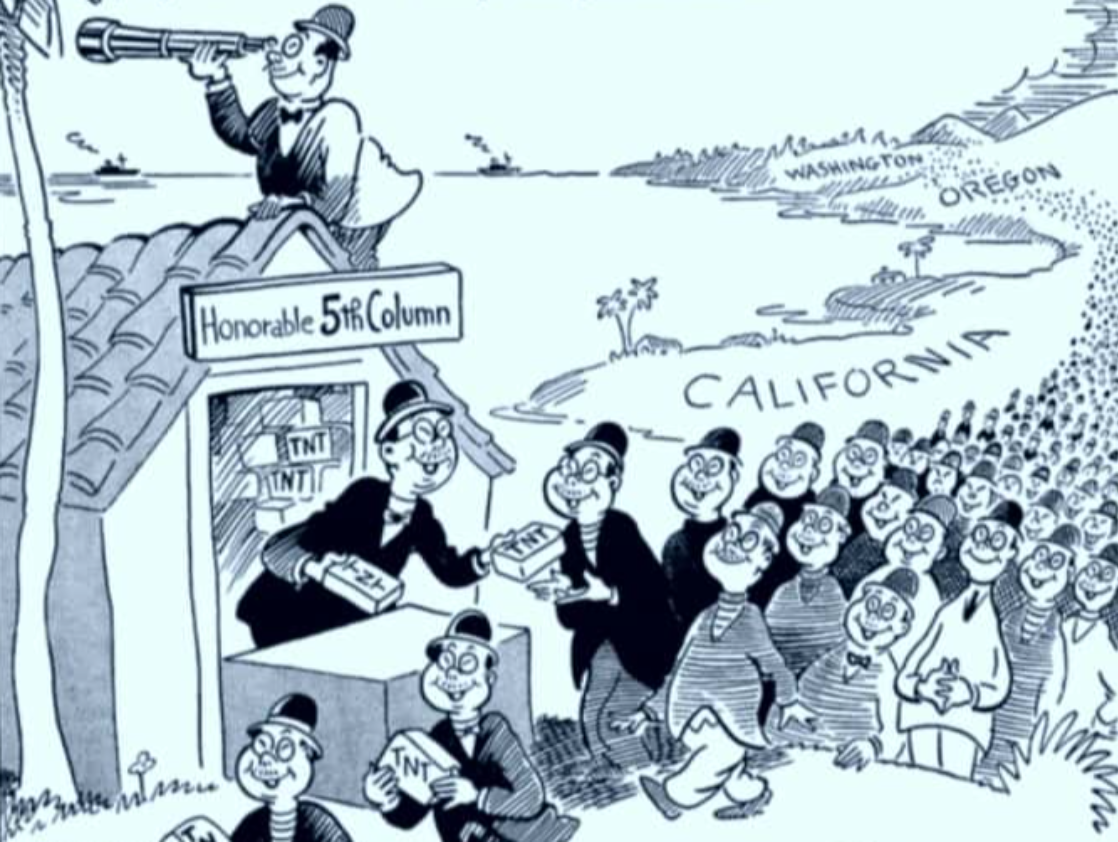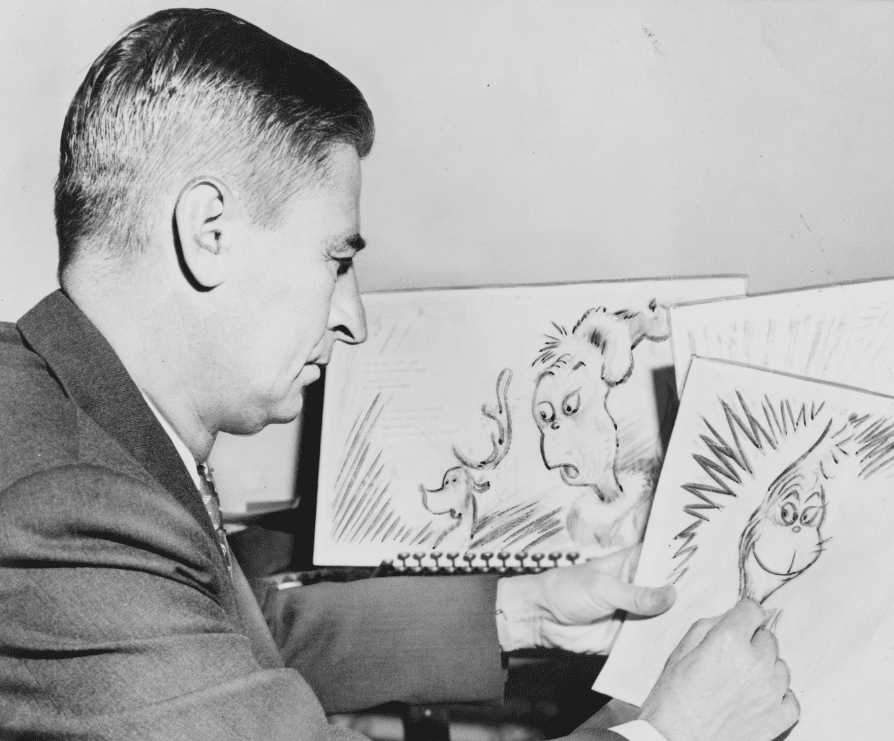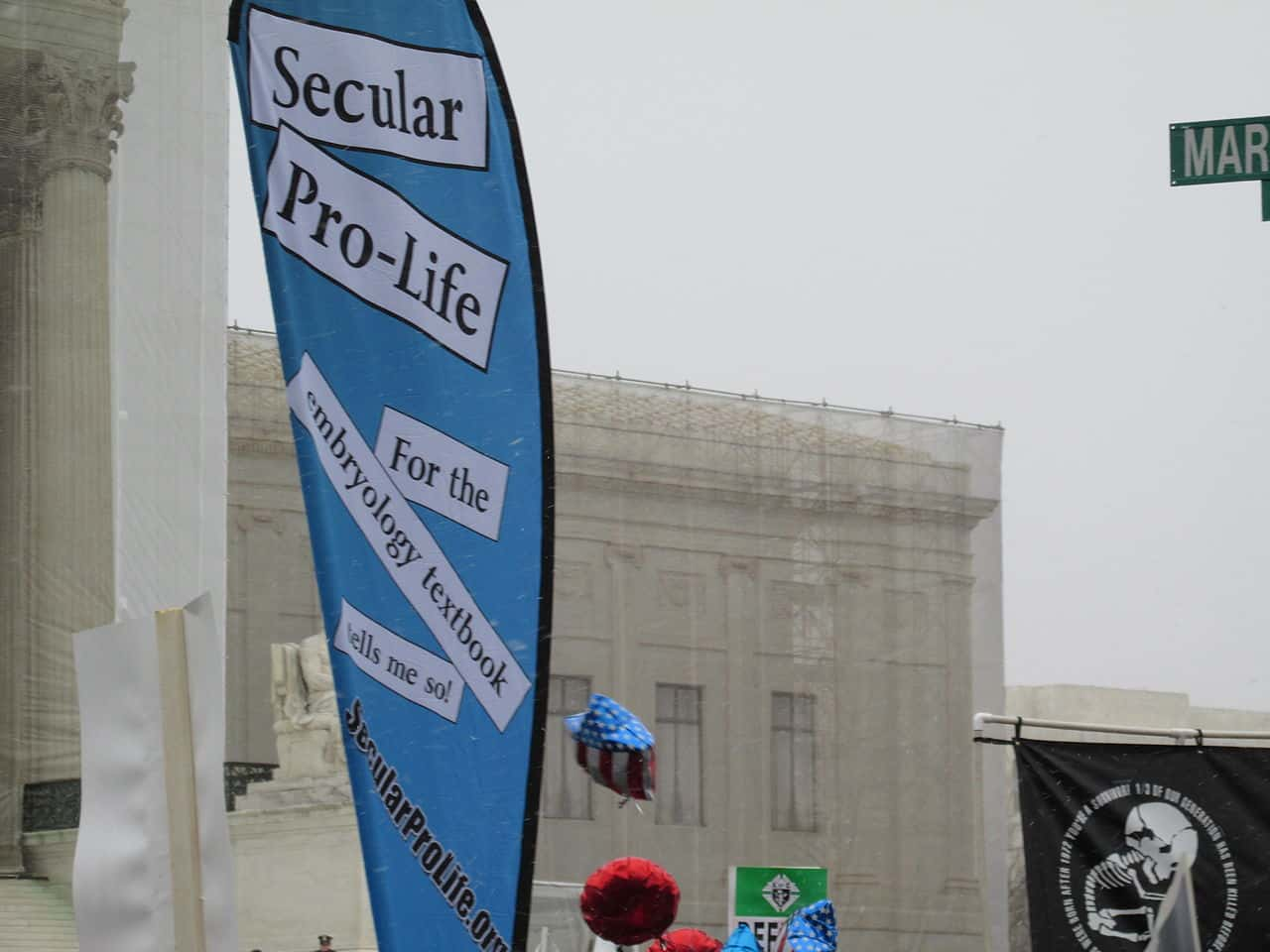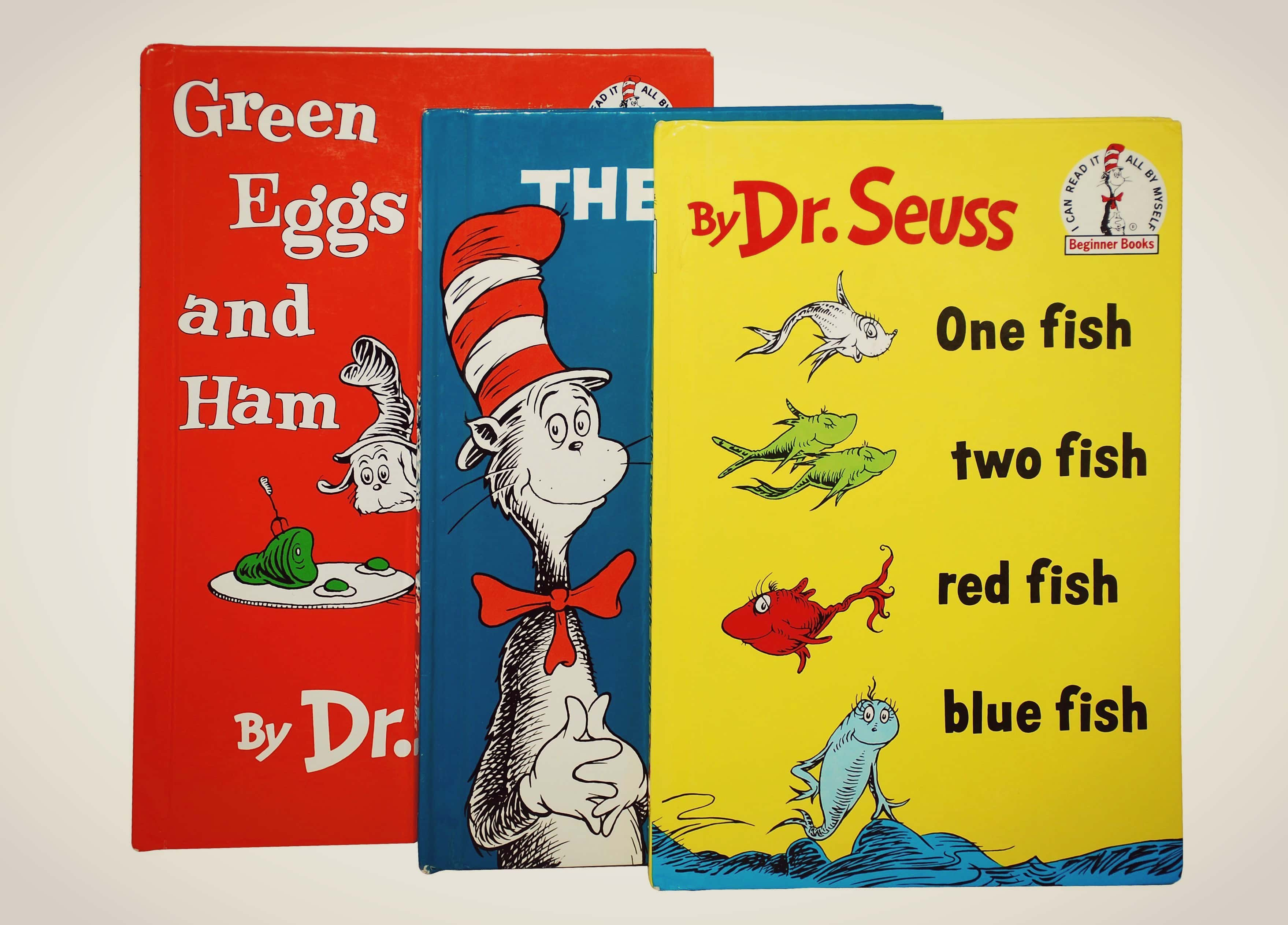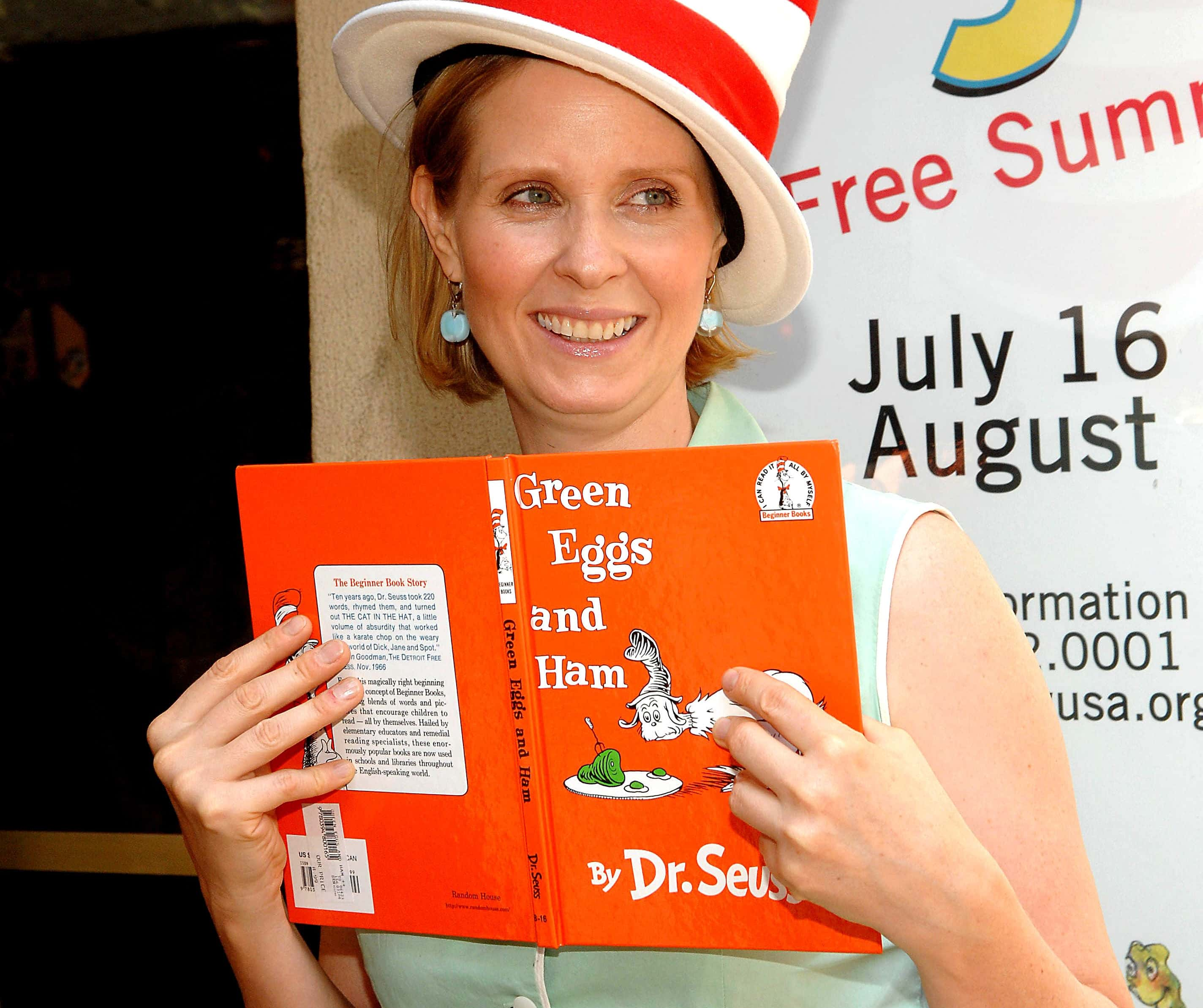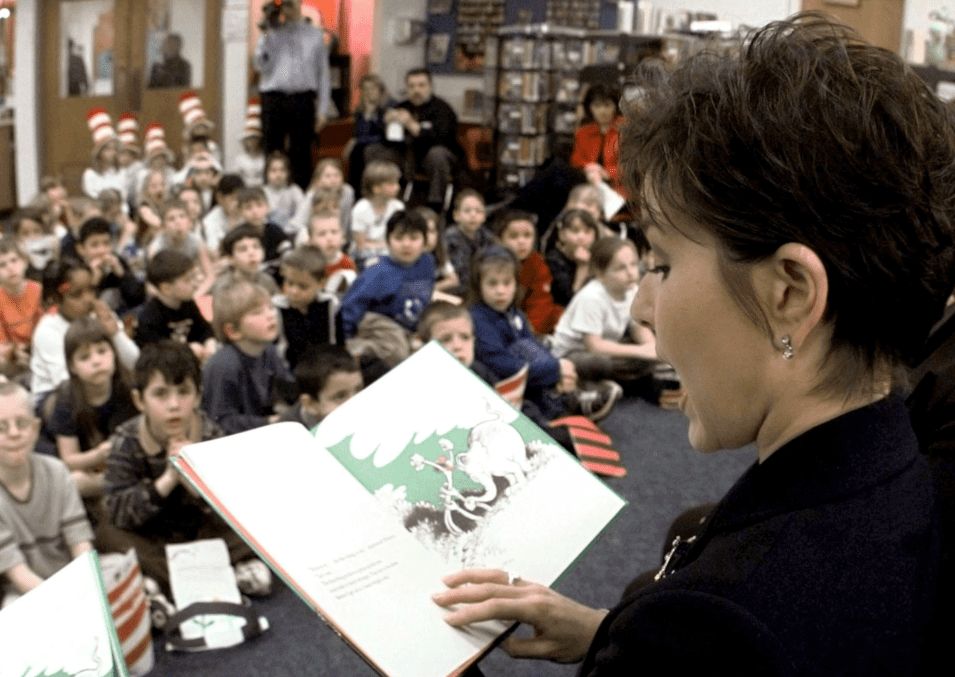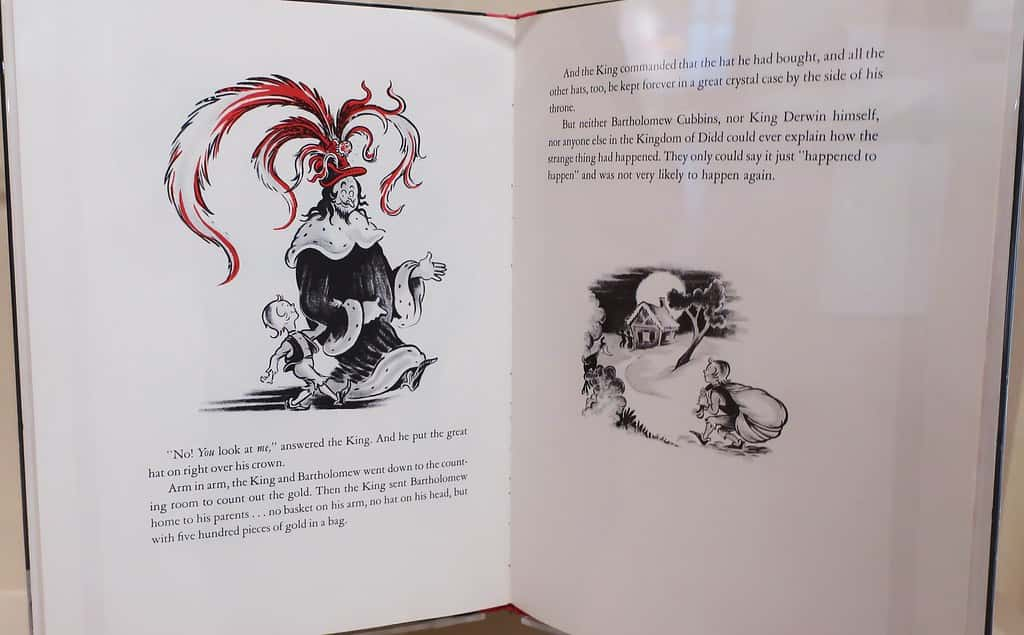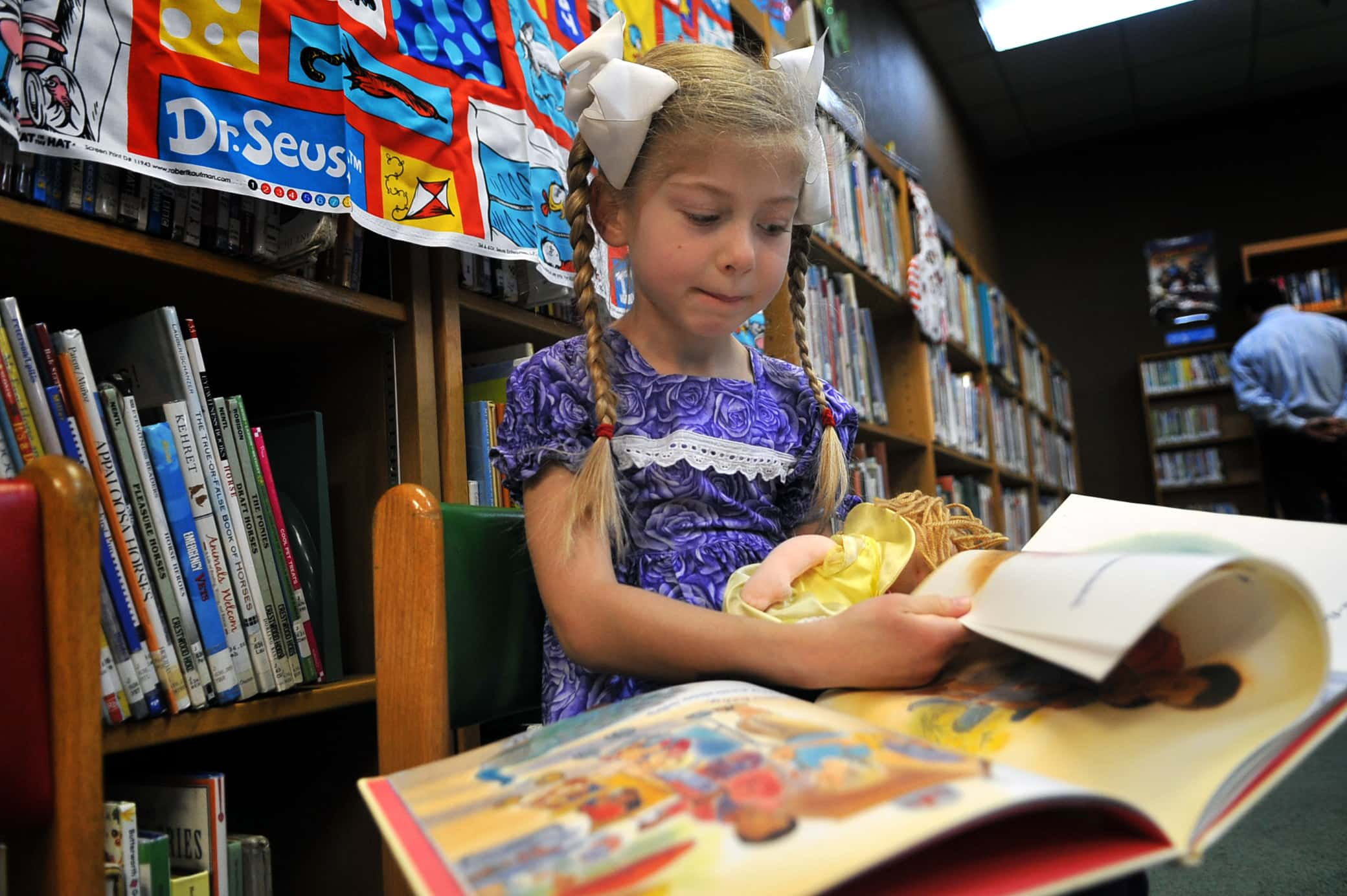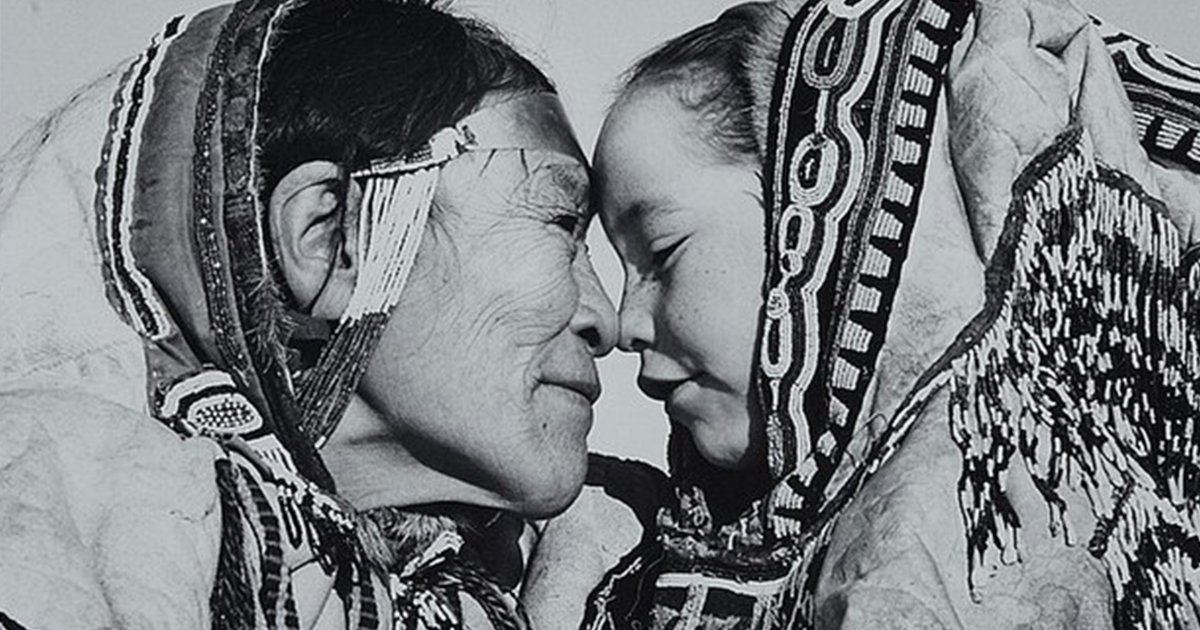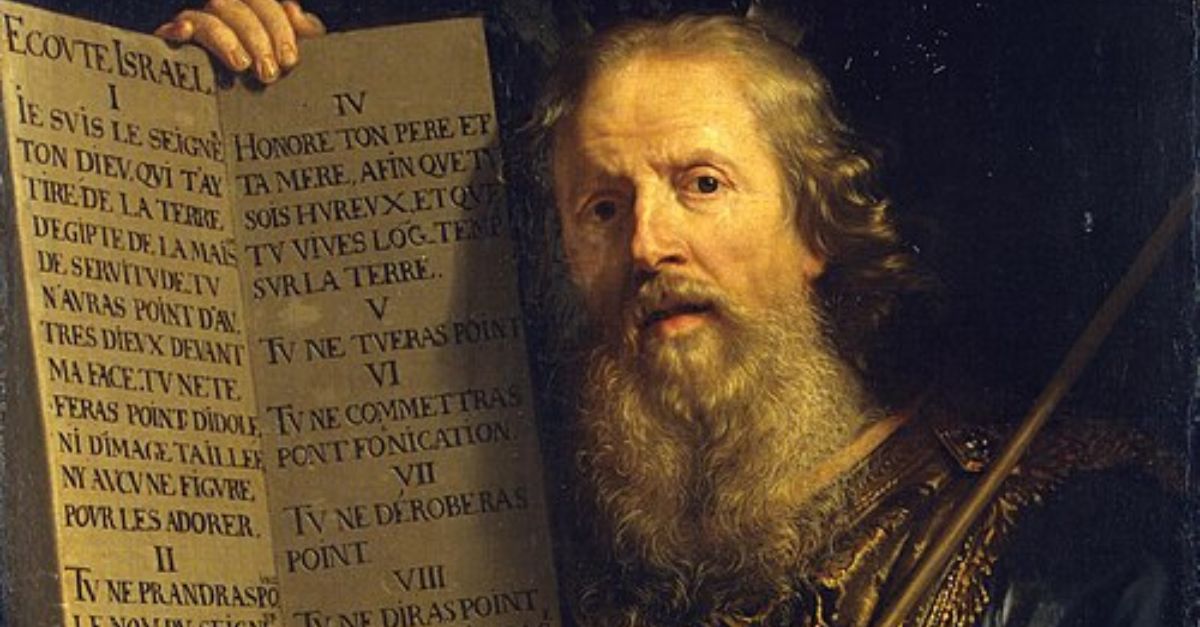“The more that you read, the more things you will know. The more that you learn, the more places you’ll go".
Theodore Seuss Geisel was born on March 2, 1904 in Springfield, Massachusetts. Before deciding to write children’s books, he worked as an illustrator and a humorist for various magazines and provided illustrations for several ad campaigns. Under the pen name Dr. Seuss, he wrote more than 60 children’s books, as well as over a dozen under the name Theo LeSieg. He was known for his iconic characters and crazy rhymes, and they have been and continue to be cherished by generations of adults and children alike. Below are 44 nonsensical facts about Dr. Seuss and his books.
44. Getting Unblocked
Whenever Dr. Seuss had writers block, he reportedly had an unusual remedy. If he was stuck, he’d enter a secret room filled with hundreds of hats and would keep trying them on and imagining what kind of character would wear it. He would then sit on the floor and wait until inspiration struck him.
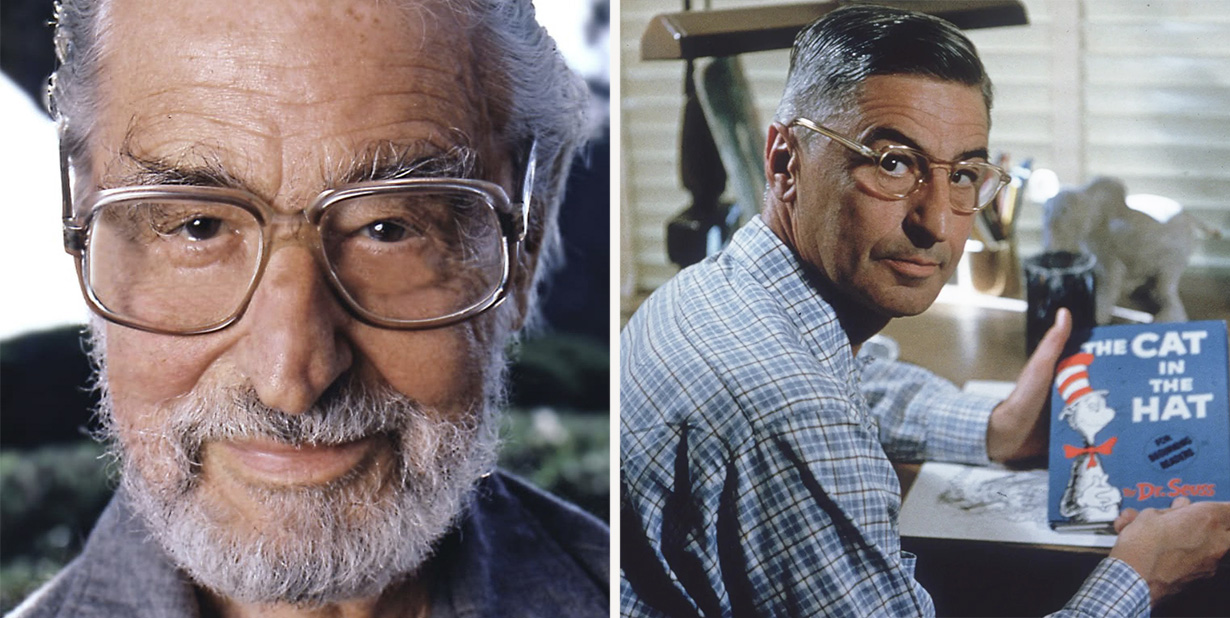
43. In His Honor
There's a statue of Dr. Seuss in his hometown. It was designed by his step-daughter, Lark Grey Dimond-Cates, and features Seuss sitting at his desk with the Cat in the Hat standing beside him. The sculpture is housed at the Dr. Seuss National Memorial Sculpture Garden, which also contains several of his most famous characters, including the Lorax, the Grinch, and Horton.
42. Sorry Dad?
Dr. Seuss’s books have been challenged/banned for a number of reasons, but one of the most bizarre challenges came in 2013 when a patron at the Toronto Public Library demanded that Hop on Pop be removed from shelves because it promoted aggression against fathers. The patron wanted the library to remove the book and apologize to fathers, as well as to pay damages that resulted from the book. The library committee ruled that the book did not actually tell children to hop on pop and dismissed the complaint.
41. Constructing Creatures
In the 1930s, Dr. Seuss was sent beaks, antlers and horns from the Springfield Zoo by his father, and he used the pieces to create sculptures of his fantastical creatures. His collection included the Tufted Gustard, a Two Horned Drouberhannis, and the Mulberry Street Unicorn. He decided to call his collection the “Collection of Unorthodox Taxidermy".
40. Stage Fright
A negative childhood encounter with Teddy Roosevelt was responsible for giving Seuss an intense dislike of public appearances. At age 14, he was to receive a medal from Teddy Roosevelt for being a top seller of Battle Bonds, but Roosevelt was one medal short, and apparently yelled “What’s this little boy doing here?” at Seuss. The Scoutmaster quickly pulled Seuss off the stage, and he was so humiliated that he feared public appearances for the rest of his life.
39. In the Nick of Time
After receiving so many rejections for And to Think I Saw it On Mulberry Street, Seuss was reportedly on his way home to burn the manuscript when he bumped into a friend from Dartmouth who worked for a children’s publisher. That same day, Seuss was signed to a contract, and a career was born. Seuss once quipped that had he been walking down the opposite side of the street that day, he’d be in the dry-cleaning business instead.
38. Cultural Critique
As he did with many of his stories, Seuss used The Sneetches and Other Stories to make a point. The title story is about creatures called Sneetches who are all exactly the same except some have a star on their bellies. The Sneetches with the stars look down on the ones without, who are oppressed and forbidden from associating with the star-bellied creatures. The story was intended to mock bigotry and discrimination between different cultures, specifically as a commentary on antisemitism. In a 2012 survey published in School Library Journal, it was ranked #63 among the top 100 picture books of all time.
37. Seuss in Song
Though he wasn’t a composer, Dr. Seuss actually wrote lyrics for several songs based on his works. He collaborated with composer Albert Hague for his best-known song, "You’re a Mean One Mr. Grinch," and with Eugene Poddany on the Dr. Seuss Songbook, which contained bedtime and nonsense songs for children. The pair also worked together on the animated TV special Horton Hears a Who. In 2000, composers Lynn Aherns and Stephen Flaherty of Ragtime fame debuted Seussical: The Musical on Broadway, based on Seuss’s most famous characters, featuring over 30 songs.
36. Swan Song
When Dr. Seuss published Oh the Places You’ll Go in 1990, he was already battling cancer, and knew that it would be his final book. The story, a favorite gift for graduates, promises kids that they will move mountains, but also warns that they will face obstacles in the process. 28 years after its publication, it has sold over 10 million copies, and is Seuss's top selling book.
35. Controversy
The Butter Battle Book is one of Dr. Seuss’s most controversial books. In the story, the Yooks and the Zooks are two races separated by a wall—one race eats bread butter side up and the other butter side down. The difference leads the two sides to battle, and each side develops a weapon that can destroy the other. The book was published in 1984 when the Cold Battle was still raging on, and the story clearly represented the Americans and the Russians. The book faced many objections due to its sensitive content, and for portraying Russians and Americans as equals.
34. Taking on New Meaning
Marvin K Mooney Will You Please Go Now is often thought to have been written about Richard Nixon and the Watergate Scandal, but in fact, the book was only published two months after the scandal, so the likelihood of that having been Seuss’ original intention is quite slim. He did, however, realize how well the name fit and in 1974 he sent a copy to his friend at the Washington Post, crossing out the name Marvin K. Mooney and replacing it with Richard M. Nixon.
33. Too Political
In 2012, a teacher in the Prince Rupert School District in British Columbia was banned from displaying a quote from Yertle the Turtle in her classroom. The quote “I know up on top you are seeing great sights, but down here on the bottom, we too should have rights” was found to be a political message, which teachers in BC are banned from posting in schools. Dr. Seuss never hid his desire to teach children about politics through his books. Many of them contained overt political messages, and Seuss himself once stated that Yertle the Turtle was about Adolf H.
32. Allegorical Elephant
The beloved story Horton Hears a Who was about more than an elephant who heard voices. Seuss wrote the story as an allegory for the US treatment of Japan after WWII, the message being that a tiny country like Japan needed the help of a larger country to recover from the battle. He wrote the story after visiting Hiroshima and dedicated the book to a friend who lived in Japan.
31. An Annual Tradition
In 1966, Dr. Seuss worked with animator Chuck Jones of Looney Tunes fame to produce an animated special of How the Grinch Take Christmas. The special was poorly received at the time and was even labeled a “costly flop” by Variety, but it’s now considered a holiday tradition and is shown annually on TV.  How the Grinch Take Christmas,Cat in the Hat Productions
How the Grinch Take Christmas,Cat in the Hat Productions
30. Seuss Does Oxford
After graduating from Dartmouth, Dr. Seuss briefly attended Oxford University in London, where he intended to get his doctorate in English Literature. However, he never completed the degree—while at the school he met his first wife, Helen, who persuaded him drop out of the program and pursue drawing full-time.
29. A Special Contribution
In 1984, Dr. Seuss was awarded the Pulitzer Prize in the special awards and citations category for his “special contribution over nearly half a century to the education and enjoyment of America's children and their parents". The prize is among the highest honors that a writer or journalist can receive.
28. Hollywood Flop
Dr. Seuss actually attempted to break into the world of film at one point. He wrote a script that was initially about the themes of world dominance and despotism in WWII, but somehow got turned into a story about a boy whose piano lessons led him into a Wizard-of-Oz like adventure. The film, called The 5,000 Fingers of Dr. T, was a flop, and some patrons reportedly walked out after 15 minutes.
 5,000 Fingers of Dr. T ,Columbia Pictures
5,000 Fingers of Dr. T ,Columbia Pictures
27. Oscar Winner
In 1947, the Oscar for Best Feature-Length Documentary was awarded to Design for De*th, a film that was inspired by something Seuss had previously written for the Battle Production Board. While it was widely praised at the time, some felt that its descriptions of Japanese culture and history were close to propaganda. Seuss also won an Oscar for Best Animated Short in 1950 for Gerald McBoing Boing.
26. Creative Quitter
Dr. Seuss loved to smoke a pipe, and when he was trying to quit using stogies he decided to have some fun with it. He once filled his pipe with dirt and planted strawberry seeds inside. Whenever he wanted to smoke, he apparently took an eyedropper and watered his pipe instead.
25. For the Love of Verse
Seuss credited his love of verse to his mother. When he and his sister were children, his mother would sing them to sleep with a rhyme that she used to sell pies at her family’s bakery. He said that she played a key part in helping to develop his interest in language and rhyming.
24. When He Drew the Zoo
When prohibition destroyed Seuss’ father’s family brewery, his father became the superintendent of Forest Park and the accompanying zoo. Seuss would bring a sketch pad along on his regular behind-the-scenes tours of the zoo, and would draw the animals he saw there. Many of these animals would end up being depicted in his future books.
23. Rejection
Dr. Seuss is one of many authors who endured multiple rejections before getting published. The first book that he wrote and illustrated, And to Think I Saw it On MulBerry Street, was rejected a whopping 27 times. It was finally picked up by Vanguard Press in 1937.
22. Promoting Literacy
One of Dr. Seuss’ most famous and beloved books, The Cat in the Hat, was commissioned by a textbook editor. The editor had read an article in Lifetime Magazine talking about the rate of illiteracy among children, and asked Seuss to write a reader that children would enjoy using 250 specific words. The book was published in 1957 and was described as “a tour de force".
21. Are You Reading This?
When Seuss was writing Hop on Pop, he played a little game with the text to make sure that the editor was reading the entire book. Instead of writing out the big words all together, he broke them up into smaller chunks. The line read: “When I read I am smart / I always cut whole words apart. / Con Stan Tin O Ple, Tim Buk Too / Con Tra Cep Tive, Kan Ga Roo". Imagine if that had made it into print!
20. Environmental Action
Dr. Seuss’ book The Lorax is considered to be a warning about human impact on the environment, and a plea for children to recognize their responsibility in protecting it. The logging industry thought the book was claiming their business was immoral and wanted it banned from schools. In 1994, the National Oak Flooring Association published a rebuttal book called The Truax.
19. Fear of Kids
Dr. Seuss unquestionably knew how to write books that children would love, but in his personal life, he was reportedly quite uncomfortable around children. He never had kids, and according to his widow Audrey he was always worrying about what they’d do or say next. When asked why he didn’t have children of his own yet wrote for children, he apparently said “You make them, I’ll amuse them".
18. Good for Babies
The idea of how babies could hear and respond to parents’ voices in the womb was of great interest to Seuss, and he was thrilled to learn that The Cat in the Hat was found by researchers to be a perfect book to read to babies in the womb.
17. No Lessons Here
Prior to the publication of The Cat in the Hat, the most popular options for teaching children to read were the Di*k and Jane books. The books were considered to be moralistic and preachy, but Seuss’s books were quite the opposite. Seuss never tried to tell children to behave and as far as he was concerned, he didn’t write for children—he wrote for people (meaning children are people and deserve to be treated with respect).
16. I Dare You
Green Eggs and Ham was written on a dare. Seuss’ editor bet him that he couldn’t write a book in 50 words or less. Seuss accepted the bet and wrote the book with exactly 50 words. It went on to become one of his bestselling books, and according to Publisher’s Weekly, has sold over 8 million copies.
15. Getting Around Punishment
During Prohibition, Seuss and his friends got caught drinking moonshine n their dorm room at Dartmouth College. As punishment, he was removed as editor of the college’s humor magazine, Jack-O-Lantern, but that didn’t mean he stopped writing. As a way around the punishment, he continued to write and publish under a variety of pen names including T. Seuss, Dr. Tehoprastus Seuss, and of course Dr. Seuss, which you just might have heard of...
14. Changing Language
The word “Nerd” was allegedly invented (or at least popularized) by Dr. Seuss. The first documented use of the word appeared in his 1950 book If I Ran the Zoo, and the nerd was a creature that the narrator promised to bring to the zoo if he were in charge. Seuss was also responsible for changing the meaning of Grinch to the way it’s defined today—as a grouchy person.
13. Critical Cartoons
In between his books for children, Dr. Seuss wrote a number of political cartoons for a left-wing newspaper in New York. He was critical of isolationist policy in the US and encouraged the country to enter the WW2. He also blasted anti-Semitism and bigotry, but those beliefs were somewhat contradicted by his depictions of Japanese people in his cartoons.
12. Other Ways to Contribute
When the US did finally join the battle, Seuss had wanted to join the navy, but he ended up making a different contribution instead. He was asked to help make battle propaganda films with Frank Capra and children’s book author/illustrator PD Eastman. He created the character Private Snafu (a popular army term meaning Situation Normal, All Fouled Up) who taught recruits how to be good army man. The cartoons served as a lesson in story development and vocabulary, which Seuss would apply to his books.
11. Pro-Life Adoption
The line “A person's a person, no matter how small” from the classic book Horton Hears a Who has become a slogan for numerous pro-life organizations. Over the years people have questioned whether or not that was what Seuss meant, but regardless of his personal feelings, he threatened to sue one pro-life group unless they removed it from their letterhead. According to the attorney for his estate, his widow also does not want his material or characters being “taken” by anybody to support a specific point of view.
9. Not Terribly Sensual
Dr. Seuss made two attempts at writing for adults. One was the book The Seven Lady Godivas: The True Facts Concerning History’s Barest Family, and it was a complete failure. Despite having undressed women in the book, Seuss thought that the book's lack of success was because he couldn’t "draw sexy". The other problem was that the book disturbed the people’s view of Seuss, the beloved children’s book author/illustrator. His only other adult picture book was called You’re Only Old Once. It was published in 1986 and was all about the unpleasantness of growing old.
8. Not Really a Doctor
Dr. Seuss was not really a doctor. He added the "Dr". to his name while in college to A: make his work more credible and B: because his father had always hoped he’d become a doctor. In 1956, his alma-mater Dartmouth granted him an honorary doctorate, making the “Dr". in Dr. Seuss a little more legit.
7. His Own Award
The Theodore Seuss Geisel Award is given out annually by the American Library Association, recognizing the achievement of an author/illustrator in using creativity and imagination to get kids reading. The award was first presented in 2006 to Cynthia Rylant for her Henry and Mudge stories.
6. Retelling a Tale
The Grinch, from the classic Christmas tale How the Grinch St*le Christmas, has a more than passing resemblance to Ebenezer Scrooge in Charles Dickens' A Christmas Carol, in which a miserly grinch threatens to take away Christmas from the poor people of his town. The story demonstrated Seuss’ ability to teach but not preach, and addressed issues like poverty, generosity and class. In the end, the despicable Grinch turns out to be not all bad, and his heart grows in size when the town shares Christmas with him, similar to how Scrooge ends up at the end of his story. 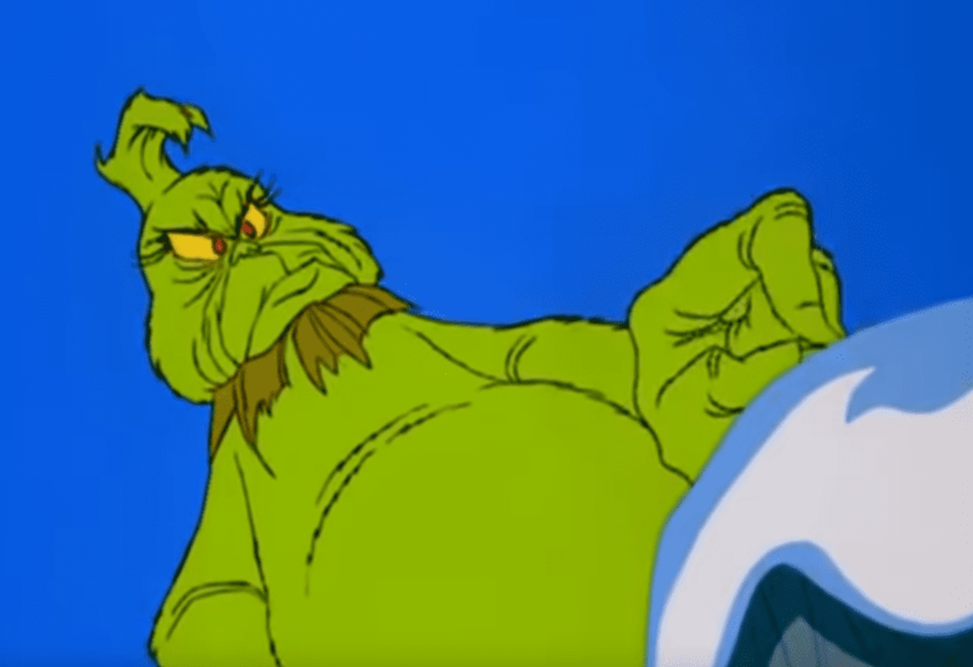 How the Grinch St*le Christmas,Cat in the Hat Productions
How the Grinch St*le Christmas,Cat in the Hat Productions
5. Happy Endings
You’ll never find a sad or unhappy end to a Seuss story, even when he’s teaching a lesson. No matter what topic he’s addressing, he made a note to ensure all of his books were funny and ended on a happy note.
4. Legacy
Dr. Seuss passed from throat cancer in 1991, but he left a lasting legacy. His books are still popular decades after their publication, many have been adapted into films, and he was given a star on Hollywood’s Walk of Fame. His birthday, March 2, is now celebrated annually as Read Across America Day, when schools and libraries plan crafts, activities, and of course readings of his books to mark the occasion.
3. That’s Not How You Say It!
Most people pronounce “Seuss” to rhyme with “Moose,” but that’s not how Seuss pronounced it. The correct pronunciation of Seuss rhymes with voice or choice, but as Zoice himself accepted the Soose pronunciation, there’s no need to say it the other way.
2. Chrysanthemum Pearl
Although Seuss was uncomfortable around kids, the idea that he didn’t want them is fiction. His first wife Helen was unable to have kids, and to try and cheer her up he invented a fake child of their own named Chrysanthemum Pearl, who could make a great oyster stew with chocolate frosting and roman candles. The 500 Hats of Bartholomew Cubbins was even dedicated to her.
1. Hidden Stash
In 2013, it was announced that a lost manuscript by Dr. Seuss had been discovered and would be published in 2015. The manuscript was among materials found by Seuss’ widow Audrey shortly after his passing, but it was set aside and rediscovered in 2013. The book, What Pet Should I Get, is believed to have been written between 1958 and 1962, but was never published. Demand for the new Seuss book was so high that the publisher increased the first printing from 500,000 to 1 million copies, and now they expect to release other books from the found materials.
Sources: 1, 2, 3, 4, 5, 6, 7, 8, 9, 10, 11, 12, 13, 14, 15, 16, 17, 18, 19, 20, 21, 22, 23, 24, 25, 26, 27, 28

